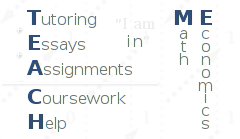Chapter 4: E4.4 Solution
Working problems is a crucial part of learning mathematics. No one can learn topology merely by poring over the definitions, theorems, and examples that are worked out in the text. One must work part of it out for oneself. To provide that opportunity is the purpose of the exercises.
James R. Munkres
Suppose that a coin with probability
of heads is tossed repeatedly. Let
be the event that a sequence of
(or more) consecutive heads occurs amongst tosses numbered
. Prove that
Hint. Let
be the event that there are
consecutive heads beginning at toss numbered
. Now make a simple use of the inclusion-exclusion formulae (Lemma 1.9).
Let
be the event that there are
heads starting from toss
. Then,
, and
so that for
,
and, by BC1,
.
Regarding the second part of the statement, I am not sure how we can use the inclusion-exclusion formula, especially because if we consider it for events
, the sum of the first two terms to estimate the probability from below becomes negative for large
. However, consider events
for
and
. These events are independent,
implies
. Further, for
,
hence, by BC2,
, and
.
